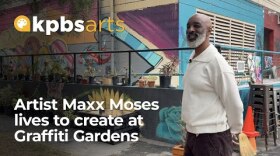Narrated by award-winning actress Jane Fonda and with an original score by legendary musician Pat Metheny, this two-hour documentary tells the epic story of environmental change on America’s western edge.





"Becoming California" examines the state’s past and present in order to form ideas for a better future. The program explains how California came to be: how colliding landforms interact with the ocean and atmosphere to create one of the most beautiful and biologically diverse places on earth. "Becoming California" then examines how humans have impacted this environment: population growth, resource exploitation and technology have transformed California and its original ecosystem. It is now the most radically changed region in North America.
Finally, "Becoming California" offers a vision for the future. A future where nature and civilization can co-exist as allies rather than rivals, where natural ecosystems can thrive alongside an active human economy and civilization.
“Fundamentally and profoundly, we’ve changed the world. We’ve actually re-engineered the earth’s ecosystems,” says Michael Rozensweig, Professor of Ecology & Evolutionary Biology at the University of Arizona. “The question is not whether we should do that, because we are doing it. The question is whether we can do it better. The question is whether we can produce some of these new environments, some of these new ecosystems that not only are good for us, but are also good for the world of nature, and I say we can.”
Act One: Assembling California - Explore the deep time origins of California. From the theory of plate tectonics to climate change to the ever-changing tapestry of life, act one explains how California came to be, how it naturally functions and how the accelerating pace of change may now signal widespread environmental collapse. Complex scientific concepts are translated into easy to understand, visually breathtaking sequences to provide the essential owner’s guide to California’s natural history.
Act Two: Reinventing California - Witness the pageant of human transformation in California. From native colonization at the end of the last ice age, across European and Mexican occupations, accelerating from the Gold Rush to the dizzying pace of change today, Reinventing California tells how population growth, resource exploitation and technology transformed California into the richest, the most populated and the most radically changed region in North America.
Act Three: Reconciling California - The third act begins with the sober admittance that California has been completely transformed. It also dismisses the naïve notion that it can be restored to some pristine, pre-human state. Instead of dwelling on what has been lost, the finale of "Becoming California" celebrates opportunity. From the redwood forests in the north to the deserts in the south, from the revitalization of the Los Angeles River to sustainable agriculture, living architecture and more, Reconciling California shows how nature and civilization are no longer bitter adversaries but indispensable partners in a statewide effort to engineer healthy functioning ecosystems amidst thriving economies.
"Becoming California" was created by the award-winning producer/photographer, Kit Tyler ("Saving The Bay," "Forgotten Journey").
The California Environmental Legacy Project is on Facebook, and you can follow @CaLegacyTeam on Twitter.





